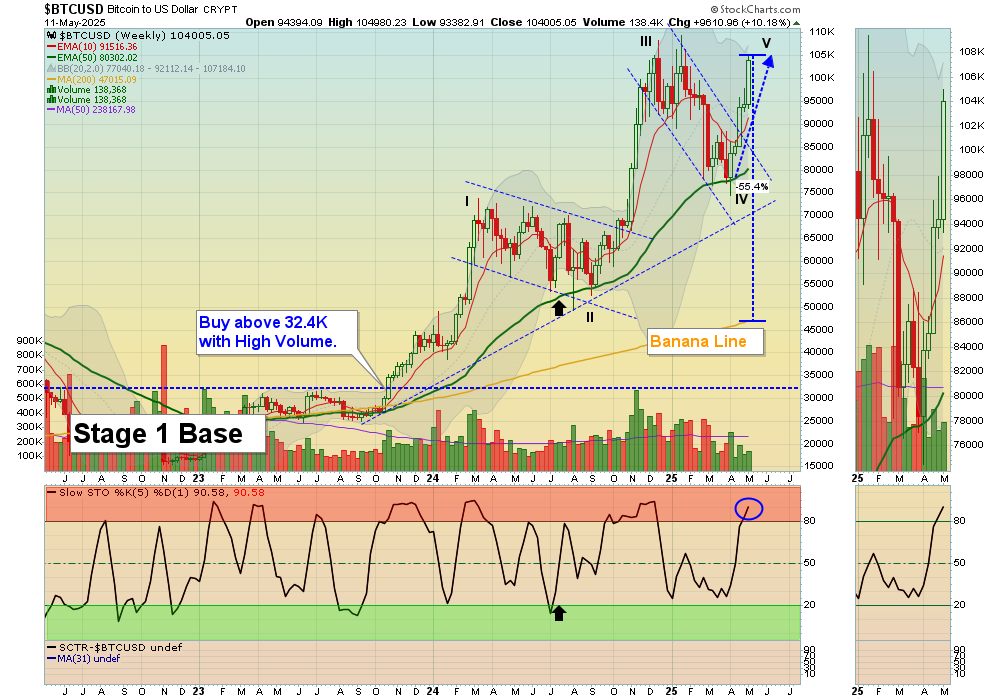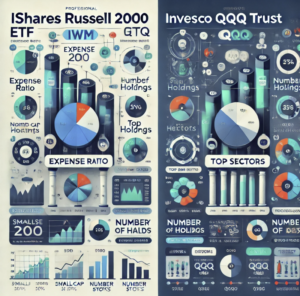
By ATGL
Updated September 26, 2024
Investors seeking to grow their wealth often turn to mutual funds, but many overlook an essential factor that can significantly impact their returns: the expense ratio. Understanding this crucial metric is vital for making informed investment decisions.
A mutual fund gross expense ratio and net expense ratio represents the annual fees and costs associated with managing the fund, expressed as a percentage of the fund’s total assets. These ratio’s encompasses various expenses, including management fees, administrative costs, and distribution costs, which can all erode overall investment performance.
In this article, we will explore the intricacies of mutual fund expense ratios, including how to calculate them, what constitutes a good ratio, and their effect on your investment returns. Through this understanding, investors will be better equipped to navigate the world of mutual funds and optimize their investment strategies.
What Is a Mutual Fund Expense Ratio?
A mutual fund expense ratio represents a measure of the cost to invest in a mutual fund, expressed as a percentage of the fund’s assets. It is an annual fee that covers the fund manager’s costs for operating the fund, including portfolio management, administration, and other operating expenses. The expense ratio is crucial because it reduces the fund’s overall returns to investors; the higher the expense ratio, the more costs eat into the investors’ profits.
The calculation of a mutual fund expense ratio includes various components, among which the most significant are management fees, which remunerate the fund manager and their team for making investment decisions and managing the fund’s portfolio. Administrative costs, such as record-keeping, customer service, and general overhead, are also included. Additionally, some funds charge an annual marketing fee known as the 12b-1 fee, aimed at promoting the fund and attracting new investors.
It’s important to note that the mutual fund expense ratio does not include certain costs. Notable exclusions are one-time charges like sales loads or front-end loads, which are paid when shares of the fund are purchased, as well as brokerage commissions that are incurred when the fund buys or sells securities within its portfolio.
The actual percentage that constitutes a mutual fund expense ratio can vary considerably. Expenses typically depend on how actively the fund is managed and the complexity of its investment strategy. Active funds, which rely on the expertise of the fund manager to outperform the market, often have higher expense ratios. Conversely, passive funds, which aim to replicate the performance of an index, tend to have lower expense ratios due to reduced management activity.
For actively managed funds, what is considered a reasonable or “good” expense ratio can range between 0.5% to 0.75%. Passive funds, or index funds, often boast average expense ratios as low as approximately 0.12%, given their straightforward investment strategies with less active management involved. Investors should compare ratios within the context of the fund type and management style, as a high expense ratio might be justified by exceptional management delivering above-average returns.
What Is Covered in a Mutual Fund Expense Ratio?
A mutual fund expense ratio is a comprehensive figure that includes several categories of operating expenses. Specifically, it comprises:
- Management Fees: These are paid to the fund manager(s) for their expertise and the day-to-day investment and portfolio management.
- Administrative Costs: These cover the fund’s day-to-day operations, including customer support, record-keeping, and other managerial costs.
- 12b-1 Fees: If applicable, these fees cover the marketing and distribution of the mutual fund, and sometimes for shareholder services.
By examining a fund’s prospectus, an investor can find a detailed breakdown of these costs, gaining transparency on what the annual expense ratio pays for. Since these costs are taken out of the fund’s assets, they are effectively reflected in the daily price of the mutual fund’s shares, known as the net asset value (NAV). This means that even though the expenses are calculated on an annual basis, their effect is continuous, subtly influencing fund performance throughout the year.
In terms of how these ratios impact investment returns, even a seemingly small percentage can make a significant difference over time due to the compound nature of investing. Thus, scrutinizing the expense ratio is an essential step in the mutual fund selection process, especially for long-term investors who seek to maximize the growth potential of their portfolios. When evaluating mutual funds, it’s important for investors to balance the expense ratio against other factors such as the fund’s historical performance, investment strategy, risk profile, and alignment with their financial goals.
How To Calculate Mutual Fund Expense Ratio
Calculating a mutual fund expense ratio is straightforward. It involves dividing the fund’s total annual operating expenses by the average value of its net assets over a specific time period. Here’s how you can calculate it:
- Identify Total Annual Operating Expenses: This includes management fees, operating costs, 12b-1 fees for distribution and shareholder services, and other operational expenses.
- Determine Average Net Assets: Find the average value of the fund’s assets during the year. This is typically provided by the mutual fund company.
- Divide Expenses by Assets: Use the formula:
Expense Ratio = Total Annual Operating Expenses / Average Net Assets - Express as a Percentage: Convert the result to a percentage to reflect the cost of the investment fund.
For instance, if a fund has total annual operating expenses of $1,370 and average net assets of $100,000, the expense ratio is:
Expense Ratio = $1,370 / $100,000 = 0.0137 or 1.37%
A fund with a 1.37% expense ratio charges $137 annually for every $10,000 invested. Investors can find expense ratio information in the mutual fund’s prospectus or financial websites. Comparing this figure across similar funds can help in making informed investment decisions.
What Is a Good Expense Ratio for a Mutual Fund?
When it comes to mutual fund investing, one of the key considerations is the expense ratio which reflects the costs necessary to operate the fund. A “good” expense ratio is often subjective, varying based on individual financial goals and the specific type of fund. However, as a general benchmark, an expense ratio ranging from 0.5% to 0.75% for actively managed portfolios is typically deemed advantageous for investors, allowing them to maximize their potential returns without incurring excessive fees.
Lower expense ratios are particularly favorable because they mean less of an investor’s capital is expended on fees, and more can stay invested and benefit from the power of compounding over time. On the other hand, expense ratios exceeding 1.5% are often considered high and may significantly impede investment return, especially over long periods.
It is important to note that expense ratios can vary significantly between different types of mutual funds. For example, equity mutual funds, which tend to have more involved management strategies, averaged an expense ratio of 0.39% as of 2021, according to industry data. Understanding these averages and comparing them to a fund’s stated expenses can help investors determine which funds offer the most cost-efficient opportunities relative to their financial objectives and risk tolerances.
Average Mutual Fund Expense Ratio Across Different Fund Types
The cost of managing a mutual fund can differ greatly depending on the investment strategy and the type of fund. Actively managed mutual funds, where a fund manager makes regular decisions about buying and selling securities, typically have higher expense ratios, hovering above 0.75%. This is due to the more hands-on approach, which often involves more in-depth research and a greater number of transactions.
Exchange-Traded Funds (ETFs), especially equity ETFs, present a stark contrast with an average expense ratio of around 0.11% as of 2022. The lower costs are partly due to the passive management style often employed by these funds—many simply track an index without frequent trading, thus incurring fewer operational expenses.
Furthermore, passively managed equity and bond index funds usually have even lower expense ratios, often below 0.10%. These funds are designed to mirror the performance of a specific index, making them less costly to operate as they require less active decision-making from fund managers.
Additionally, the size of the fund can influence its expense ratio. Smaller funds often have higher ratios because the operating costs must be spread over a smaller asset base. This means investors in these funds are typically charged more to cover the necessary expenses.
The following table highlights the typical expense ratios for different types of funds as of the reported time periods:

Investors should always evaluate expense ratios in conjunction with other fund performance factors such as historical returns, the fund manager’s track record, and overall investment strategy to make well-informed decisions tailored to their investment objectives.
Impact of Expense Ratios on Investment Returns
Expense ratios play a critical role in the potential returns of mutual fund investments. This ratio represents the percentage of a fund’s assets that go towards covering operating expenses, including management fees, administrative fees, and 12b-1 fees for marketing and distribution. The effect of expense ratios on investment returns can be profound over time. A higher ratio signifies that more of the fund earnings are used to cover expenses, lowering the investment return for shareholders.
For example, if a mutual fund has a lower expense ratio, its Net Asset Value (NAV) typically increases, potentially leading to better investment performance. When evaluating similar mutual funds, choosing the one with the lower expense ratio can be a strategic move to maximize returns.
The impact of expense ratios becomes magnified due to compounding. As returns are reinvested over time, even a small difference in fees can lead to significant discrepancies in long-term savings. Therefore, investors seeking to optimize their financial goals often gravitate towards funds with the lowest expense ratio, to ensure that performance gains are not unduly compromised by high fees.
Tips for Evaluating Mutual Fund Expense Ratios and Maximizing Returns
When evaluating mutual fund expense ratios to maximize returns, investors should be mindful of the impact these fees have on their investment. A mutual fund expense ratio is a measure of what it costs an investment company to operate a mutual fund, and it’s expressed as a percentage of the fund’s assets. These fees cover fund management, administration, and, in some cases, marketing costs, known as 12b-1 fees.
Here are some tips for assessing mutual fund expense ratios:
- Compare Ratios Among Similar Funds: Not all mutual funds are created equal. An expense ratio that might be reasonable for a high-touch, actively managed fund may be excessive for a passively managed index fund. For example, an expense ratio of 0.95% may be acceptable for the former but considered high for the latter.
- Consider the Type of Fund: Different strategies come with different costs. Equity mutual funds often have higher expense ratios than bond funds. Similarly, funds employing extensive research and active management typically charge more than passive funds tracking an index.
- Look into Direct Plans: If you’re looking to reduce the expense ratio, opt for direct plans from mutual fund companies as they generally have lower fees than regular plans.
- Check the Expense Ratio Regularly: The Securities and Exchange Commission requires uniform calculation and disclosure of these ratios, which eases the comparison process. Take advantage of this transparency for periodically reassessing your investments.
- Understand the Impact on Returns: A lower expense ratio can significantly improve net returns on your investment. Be sure to calculate how these fees can compound over time and reduce your earning potential.
By keeping expense ratios in check and selecting funds judiciously, investors can work towards optimizing their mutual fund investments to better align with their financial goals. Remember, over time, even small differences in expense ratios can result in stark differences in investment returns.
Maximize Investment Returns With Above the Green Line
Mutual fund expense ratios play a crucial role in determining the net returns on investment. Smaller mutual funds often incur higher expense ratios due to their limited asset base, which requires a greater contribution from each investor to sustain their operations. For mutual funds, justifying the expense ratio is contingent upon their performance compared to market benchmarks. It is essential for the fund’s returns to exceed its peers by a margin that surpasses its expense ratio to be deemed a good investment.
On average, stock mutual funds carry an expense ratio of around 1.37%. This translates to an investor with a $10,000 stake in such a fund paying approximately $137 in annual fees. Evidently, these fees impact an investor’s annual returns.
To maximize investment returns, investors should consider funds with a lower expense ratio, without compromising on the quality of fund management and the potential for above-average market performance. Join Above the Green Line today and learn more about maximizing your investment returns.
FAQs About Expense Ratio for Mutual Funds
When it comes to mutual fund investing, understanding expense ratios is crucial. An expense ratio is an annual fee charged by mutual fund companies to handle the fund’s operating expenses. It is important to note that this fee is deducted daily from the fund’s assets, and it is reflected in the net asset value (NAV) of the fund. The lower the expense ratio, the less investors pay in fees to the mutual fund company, which can lead to higher returns over time.
The expense ratio includes various components, such as management fees, which compensate the fund manager; administrative costs, which cover the fund’s customer service, record-keeping, and other administration-related services; and additional annual fees like the 12b-1 fee, which covers marketing and distribution costs. Notably, one-time fees like sales loads or brokerage commissions do not factor into the expense ratio.
Investors can calculate a mutual fund’s expense ratio by dividing the fund’s operating expenses by the average value of its net assets. The result reflects the percentage of the investment that is used for fees over a given time period. It’s important for investors to remember that expense ratios can differ widely, often varying based on the type of fund management. Typically, actively-managed funds accrue higher expenses compared to passively-managed funds.
What Is a Good Total Expense Ratio for a Mutual Fund?
A “good” expense ratio for a mutual fund is subjective and relative to the type of fund and the returns it delivers. For actively managed mutual funds, a ratio ranging between 0.5% and 0.75% is often considered favorable. Expense ratios exceeding 1.5% are generally viewed as high. Passively managed funds, such as index funds, have substantially lower expense ratios, frequently below 0.10%. When it comes to funds specializing in small companies or international stocks, an acceptable threshold for expense ratios would ideally be below 1.25%. It is crucial, however, to evaluate a fund’s expense ratio against its performance since an actively managed fund must significantly outperform passive indices to warrant higher fees.
What Is the Difference Between Management Fee and Fund Expense Ratio?
It is imperative to distinguish between a management fee and a mutual fund’s expense ratio. While the management fee is a component of the expense ratio, it specifically refers to the fee charged by the fund manager for personally managing a portfolio, usually known as an assets under management (AUM) fee. The magnitude of this fee can differ depending on the level of personal service offered.
On the other hand, the expense ratio represents the total annual cost borne by an investor for a fund’s management and other related expenses, and it is shown as a percentage of the invested assets. The expense ratio encompases the management fee along with a variety of other costs, such as marketing, operating and administrative fees. Since expense ratios are deduced from returns, they can have a significant impact on profitability, underlining the importance of grasping the implications of both management fees and expense ratios when making investment decisions.
Which Mutual Fund Has the Lowest Expense Ratio?
Some mutual funds are known for having particularly low expense ratios, making them attractive options for cost-conscious investors. Typically, target-date funds, which are often employed in retirement plans like 401(k)s, feature an average expense ratio of 0.40%. Index funds, due to their passive management style, are on the lower end of the scale with expense ratios usually around 0.25% or even less than 0.10%.
Exchange-traded funds (ETFs) tend to offer even lower expense ratios, frequently below 0.50%, primarily because they usually use passive investment strategies. Among mutual fund companies, Vanguard has garnered attention for offering stock index funds with expense ratios that are lower than 0.50%. It is recommended that investors always compare the expense ratios of various funds to ensure they are getting a competitive rate in line with their financial goals.






